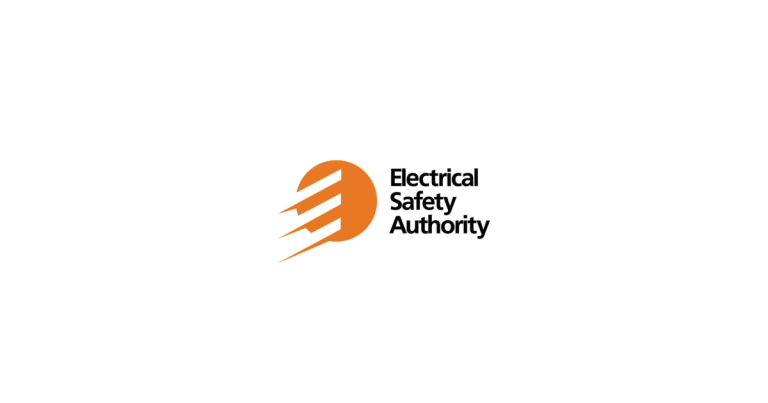Power Shifts: Emerging Low-Voltage Trends, Impacts and Opportunities, Part 2

June 26, 2017
In the previous issue of Electrical Industry Newsweek, we began our coverage of Electro-Federation Canada’s recently released research report, Power Shifts: Emerging Low-Voltage Trends, Impacts and Opportunities for the Canadian Electrical Channel. The article looked at who’s driving the shift toward low-voltage DC, what’s behind it, and the outlook for Canada’s electrical channel. In this issue, the second in a 5-part series: an end-to-end overview of low voltage, including DC power, low-voltage DC, Power over Ethernet, PoE partnerships, DC microgrids, and distributed low-voltage power.
DC power
The power supply grid has been providing AC power as the most efficient means to support the dominant motor-loads market for many decades. Now, end user loads are becoming more dominated by electrical devices that use DC power, thanks to the advent of the semiconductor 50 years ago. DC power for building applications is not new, it’s been used with variable frequency drives on motors for years. More recently, there has been a rapid adoption of DC-consuming LED lighting, new media technologies, data centres, and the entry of electric vehicles.
In addition to considerations for hybrid DC/AC systems in our market today, DC grids are also being rapidly adopted in countries with unstable AC systems (e.g., India). Implementation revenue in the global DC distribution network market is expected to grow from US$2.8 billion in 2015 to US$5.1 billion in 2024.[1]
Low-voltage DC
There are strong economic reasons to look at low-voltage DC systems, whether they just supply power or are designed to also offer data communication (e.g., PoE and DLVP). “If we could move to a low-voltage infrastructure, where simple low-voltage wire [can be used] without the requirement of mechanical protection [rigid conduit], that’s a 50% or greater reduction in the installation cost of infrastructure,” offers Chris Andrews, Product Manager, Low Voltage Lighting & Control Systems, Eaton, speaking at EFC’s recent LVDC Industry Summit about feedback from market players. In addition, light fixtures that are low voltage and running off low-voltage infrastructures can have 10% or 12% more efficiency than regular line-voltage systems.
Also at the summit, two styles of touch-safe LVDC power delivery systems were presented:
• a program involving Armstrong’s suspended ceilings that incorporates their Flexzone product. Flexzone is a suspended ceiling grid that looks like a standard commercial tiled ceiling installation but is energized, and via clip-on whips, powers lighting fixtures and digital sensing and control devices for lighting, ventilation, shading and security.
• a recently-introduced public charging system for digital devices such as mobile phones, tablets and computers. Public spaces and commercial offices are the target market. This system uses 24 Volts power supplied over rail, and again, the conversion to DC is done only once. Rail segments support up to 24 devices at a time with the system being smart enough to understand when each rail is fully loaded. A simple touch-safe rail of any preferred length goes across a wall or other accessible surface wherever there are people to use it. It uses a proprietary USB connector that centres itself onto the rail and allows you to plug your USB into it, and it can slide on the rail and be moved.
Power over Ethernet
Power over Ethernet (PoE) is not a new technology. What originally served as the backbone for voice-over IP (VoIP) systems, this technology has grown to power other office systems such as corporate Wi-Fi. The range of PoE’s application continues to grow steadily due to its growing power-carrying capacity — from its original 7 Watts in 2000 to its incremental increase to 60 Watts today… and soon much more. PoE has been on quite a journey. In 2009, a new standard by the Institute of Electrical and Electronics Engineers, IEEE 802.3at, increased the transmitted power limit to 30W to meet the demands of other new network-capable devices, such as wireless access points and security cameras. This was designated as PoE+.
More recently, a new industry standard is being drafted (IEEE 802.3bt), which will significantly increase the amount of power delivered to end devices — this time to 100 Watts, allowing PoE to broadly power lighting fixtures and a wide range of digital devices, sensors and controls.
Eaton describes PoE as a natural fit in applications where data network integration is expected, making it an excellent choice for high-technology campuses, such as data centres, as well as some office, education and healthcare applications: “the PoE user understands and appreciates a data network infrastructure designed to process analytics, optimize space utilization and control all aspects of an entire facility over one system.”
PoE partnerships
This technology is so formidable that there have been a number of partnerships developed between leading equipment manufacturers and solution providers, such as Cisco Systems (Cisco’s Digital Ceiling Partner Community). The possibilities through such partnerships extend the capabilities of PoE technology. At a session hosted by the Illuminating Engineering Society (IES) in Toronto, guest presenter Shirley Coyle, President of Cree, Inc., emphasized that “a PoE-run fixture is not just a lighting control system; it is a sensor network and operating system that enables applications far beyond light.” Shirley shared her perspective on trends driving lighting over PoE:
• energy and building codes continue to demand more advanced controls and their use to improve energy efficiency (occupancy sensing, dimming, daylight harvesting)
• sensors — technical advancements have brought about an abundance of options, and costs have dropped dramatically
• improvements in LED technology allow for integration of sensors directly into fixtures
• software systems are increasing in sophistication and application, as is the availability of big data and its analysis, thanks to inexpensive increased data storage capacity and increased computing power
• building systems and IP networks are expanding
• the evolution of PoE technology, from 7 Watts in 2000 to 90+ Watts in 2017
At EFC’s LVDC Industry Summit, attendees identified the likely impacts of PoE adoption on electrical channel players (see table, below). Regardless of the impact level your channel segment may experience, one thing is certain: the opportunities for PoE in the electrical industry are tremendous.

DC microgrids
Many participants at EFC’s LVDC Industry Summit raised concerns about barriers preventing DC microgrids from gaining mass appeal, such as Current Feed-in-Tariff (FIT) programs. The tipping point for this technology will be the adoption of net-metering and storage, allowing local generation and the use of DC power.
The Continental Automated Buildings Association (CABA) released a whitepaper, entitled The Role of Hybrid AC/DC Building Microgrids in Creating a 21st Century Enernet.[2] This paper examines the alternative of maintaining power in its native DC form from distributed generation and storage sources in a simplified, more flexible, efficient and resilient configuration in the building. The article
• describes how DC power could be aggregated with AC power from the public grid and distributed in a building via a hybrid AC/DC microgrid
• explores the eventual interconnection of building-level microgrids within and between buildings and the public grid to create an energy network. They refer to this energy network as the “Enernet,” analogous to the network of computers that constitute the Internet
• discusses the motivation, need and status of new standards to support the implementation of such buildings with wide-scale use of private microgrids that would typically run at 1500 Volts or less
Distributed low-voltage power (DLVP)
Finally, low-voltage power can also be supplied via distributed low voltage power (DLVP) Systems. “Distributed low voltage power (DLVP) blends the benefits of both AC and DC power distribution.” [3] Like PoE, DLVP provides power and communications over the same connected cable. In addition, it can be reconfigured at any time without a system rewiring. While both PoE and DLVP meet the same standards and electrical codes for Class 2 low voltage and share many components and functions, they are very different systems. According to Eaton, “DLVP’s value is in its simplicity and flexibility. DLVP is so simple to configure that it can be plug-and-play commissioned at the time of installation by the same contractor. It was consciously developed to be simple, and it’s great for applications with repeated spaces, like schools that have 40 classrooms with matching configurations.” DLVP systems reduce the total installed cost of an LED lighting and controls project by up to 20%, in Eaton’s experience.
Coming in Part 3: implications for codes, standards and regulations.
Find out more about Power Shifts: Emerging Low-Voltage Trends, Impacts and Opportunities for the Canadian Electrical Channel: www.electrofed.com/market-research/.
Notes
1. “Direct Current Distribution Networks”, Navigant Research, 2015. Accessed: April 2016: https://www.navigantresearch.com/research/direct-current-distribution-networks
2 “The Role of Hybrid AC/DC Building Microgrids in Creating a 21st Century Enernet”, Continental Automated Buildings Association (CABA), June 2016. Accessed April 2017: http://www.caba.org/CABA/DocumentLibrary/Public/AC-DC-Microgrids-Part-1.aspxAC-DC-Microgrids-Part-1.aspx
3. “Distributed Low Voltage Power Combines Efficient Lighting with Intelligent Controls”, Tom Lombardo, July 10, 2016. Accessed March 2017: http://www.engineering.com/ElectronicsDesign/ElectronicsDesignArticles/ ArticleID/12610/Distributed-Low-Voltage-Power-Combines-Efficient-Lightingwith- Intelligent-Controls.aspxengineering.com/ElectronicsDesign/ElectronicsDesignArticles/ ArticleID/12610/Distributed-Low-Voltage-Power-Combines-Efficient-Lightingwith- Intelligent-Controls.aspx




![Guide to the Canadian Electrical Code, Part 1[i] – A Road Map: Section 52 — Diagnostic imaging installations](https://electricalindustry.ca/wp-content/uploads/2022/11/Guide-CE-Code-2-768x432.png)





![Guide to the Canadian Electrical Code, Part 1[i] – A Road Map: Section 52 — Diagnostic imaging installations](https://electricalindustry.ca/wp-content/uploads/2022/11/Guide-CE-Code-2.png)






